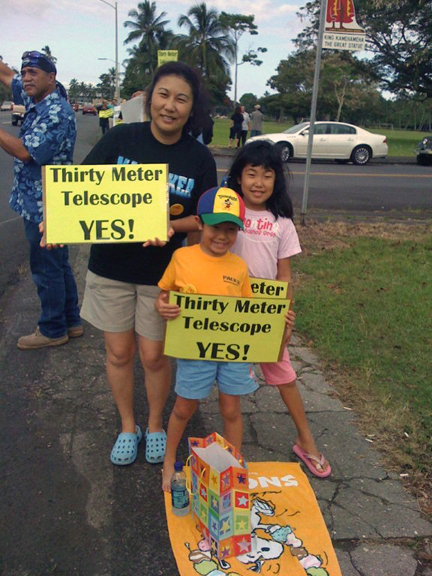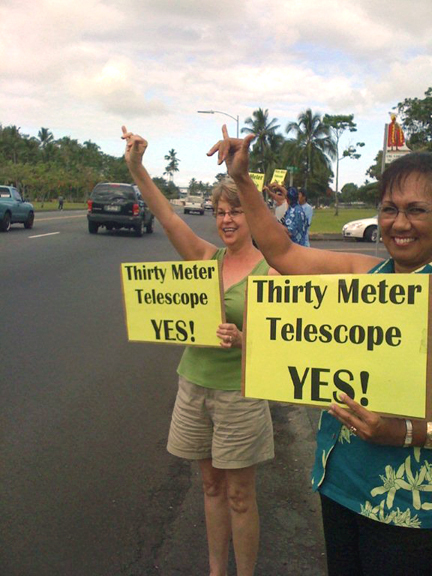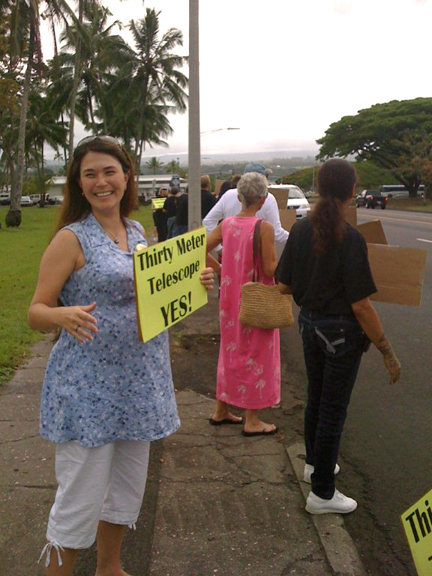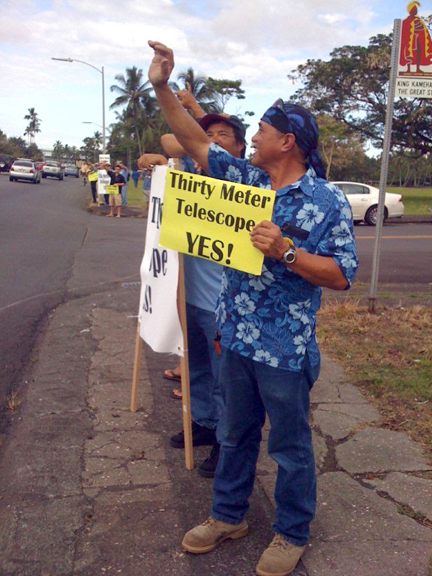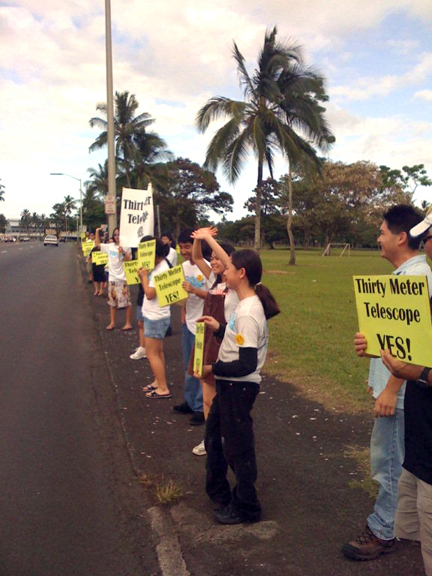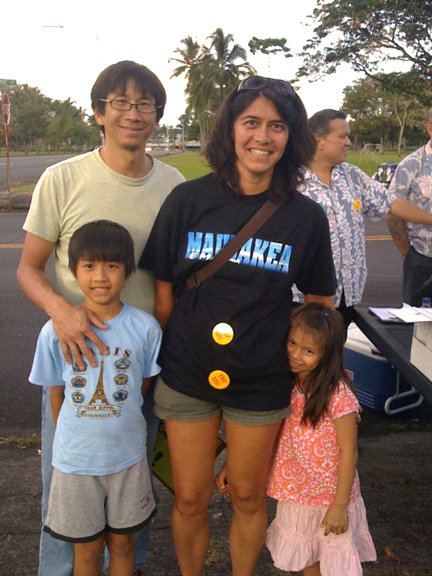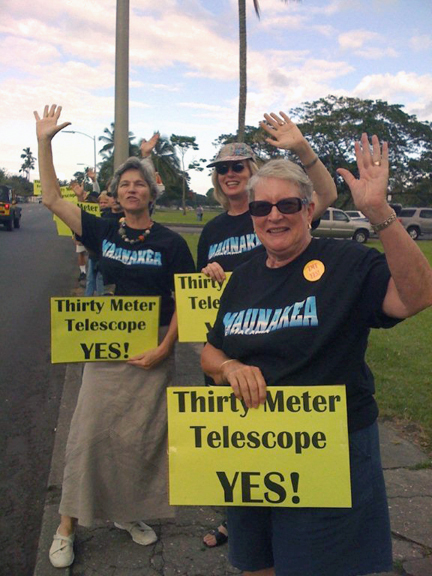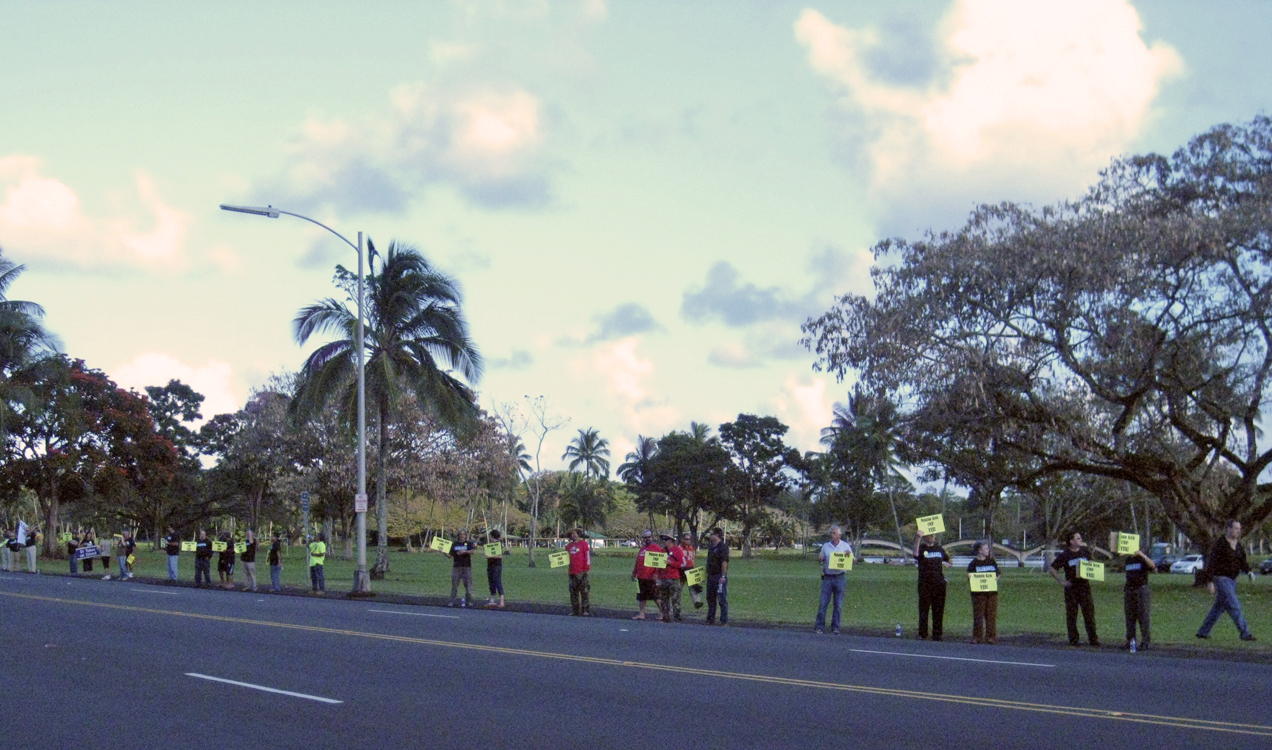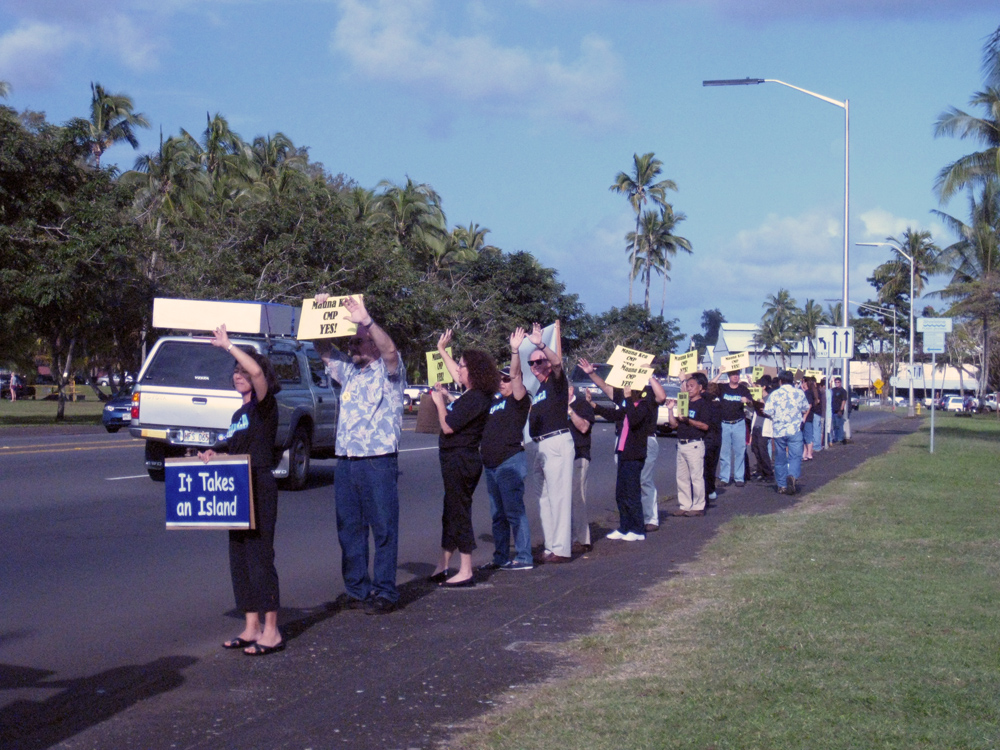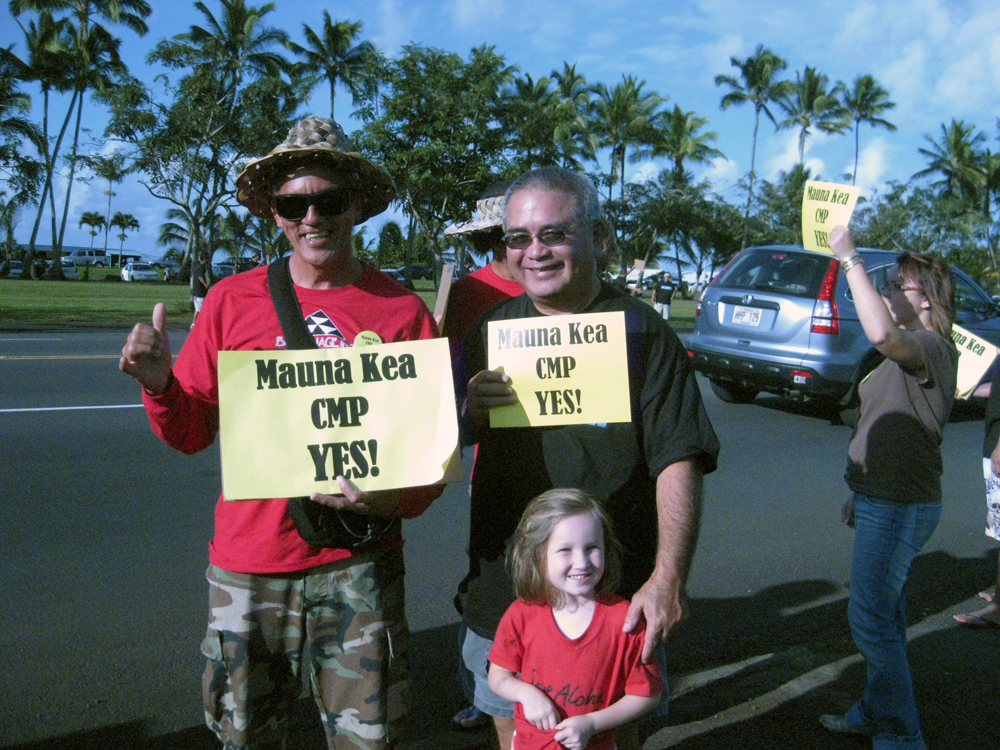This afternoon, University of Hawai‘i President David McClain issued this statement:
After discussions with academic and community leaders on the Big Island, and review with the Board of Regents, I can say that should
TMT come to Mauna Kea, the Hawaiian community and community-at-large will benefit through an annual $1 million community benefit package, which will provide funding for locally chosen and managed educational programs on Hawai‘i Island. This will begin once all permits for the project have been received.
The compensation to the University of Hawai‘i, which is expected to begin at “first light,” will be split equitably between a higher education package to be used for selected initiatives of the University of Hawai‘i at Hilo and Hawai‘i Community College on Hawai‘i Island, and observing time for University of Hawai‘i scientists.
David McClain
President, University of Hawai‘i
What catches my attention is the part about an annual amount of $1 million for locally chosen and managed educational programs on Hawai‘i Island.
I know how important early education is. My Pop was the greatest influence on me. I learned the most important things, which lasted through my entire life, when I was 10 years old.
If we teach our keiki the values they need to make a society that is successful and thriving “when the boat no come,” we will have done our jobs. This $1 million that will be dedicated to keiki education annually is key to the survival of future generations. It is no longer about us – it is about the future generations.
We must learn and perpetuate what it was that allowed Hawaiians to survive for hundreds of years out in the middle of the ocean without boats coming in every day with goods from someplace else.
In the future, our values will need to revolve around aloha. We will need to assume responsibility—kuleana. We need to make more friends and stay closer to our families.
We live in the modern world, so how do we use what we have and meld it with the values that worked? We need to have a balance of science and culture in order for all of us to do what we do to help our greater society.
My Pop told me: “There are a thousand reasons why ‘No can.’ I only looking for one reason why ‘Can.’”
***
Yesterday was King Kamehameha Day. I think of King Kamehameha as a doer, not a talker. He took what was available to him and used it to the best advantage.

Since we are going to do a sign waving in support of the Thirty Meter Telescope today, in front of the King Kamehameha statue, I thought that I would go take pictures.
Over the last couple of weeks many of us did radio spots in support of the Thirty Meter Telescope. Running throughout the spots is the word “pono.” Those ads started running today.
Download HCU_Keawe_Wallace
Download HCU_Richard_Dale
Download HCU_Rockne_Penny
Download HCU_William_Penny
We will have more soon.
***
I went on three live radio programs yesterday morning. First with Kat and Keala at KWXX, then a few minutes with DC at Da Beat, and then on with Ken Hupp at KPUA.
I talked about how I volunteered to be on the TMT committee of the Hawaii Island Economic Development Board when I first heard that the TMT was considering coming to Hawai‘i. I felt strongly that if it was to be done, it needed to be done right. I talked about going to Keaukaha Elementary School to see its principal Lehua Veincent and asking where they go on excursions.
He told me the bus was too expensive so they walked around the community. I was shocked. How was it possible that in the shadows of hundreds of millions of dollars’ worth of telescopes on Mauna Kea, Keaukaha Elementary School did not have enough money to go on excursions?
My friends Duane Kanuha, Leslie, Macario and I said, “This no can,” and we decided to do something about it. We went out in the community and told the story. We said that for $600 people could adopt a class at Keaukaha Elementary School, so they could rent a bus and pay entry fees to ‘Imiloa Astronomy Center or another destination.
The idea is to inspire the kids. My Pop inspired me when I was in the fourth grade and his effect lasted a lifetime. I think the same can result from ‘Imiloa.
The Moores, a large funder of the TMT, found out about the Adopt-A-Class project and liked it. They adopted all the students of the Big Island.
I told the audience about the $1 million dollar fund that will be used for the education of our keiki. We are relying on the people we appoint to administer the fund. We want to appoint people to the Board based on their passion for taking care of the community for the long run.
